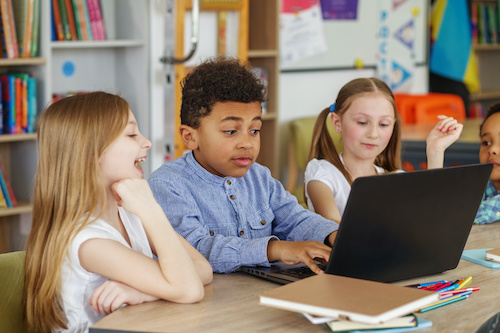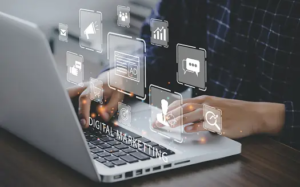
Educational Tools: Shaping the Future of Learning
I. Introduction
In the rapidly evolving landscape of education, the integration of educational tools has become a cornerstone for fostering effective and engaging learning environments. From interactive whiteboards to virtual reality, these tools have revolutionized the way students interact with educational content.
II. Types of Educational Tools
- A. Interactive Whiteboards
Interactive whiteboards have replaced traditional blackboards, providing an immersive and dynamic learning experience. These tools allow teachers to incorporate multimedia elements into their lessons, catering to diverse learning styles.
- B. Learning Management Systems (LMS)
Learning Management Systems streamline administrative tasks and provide a centralized platform for educators to manage curriculum, assessments, and student progress. LMS enhances collaboration and communication among teachers and students.
- C. Educational Apps
Mobile applications designed for education bring learning to the fingertips of students. With gamified elements and interactive content, educational apps make learning more enjoyable and accessible.
- D. Virtual Reality (VR) in Education
VR technology transports students to virtual environments, offering hands-on experiences that traditional methods cannot replicate. From exploring historical events to dissecting virtual organisms, VR enhances the understanding of complex subjects.
III. Benefits of Educational Tools
- A. Enhanced Engagement
Educational tools captivate students’ attention, making learning more enjoyable and memorable. The interactive nature of these tools promotes active participation and collaboration in the classroom.
- B. Personalized Learning
Adaptive learning platforms tailor educational content to individual student needs, allowing each learner to progress at their own pace. This personalized approach addresses diverse learning styles and abilities.
- C. Accessibility and Inclusivity
Educational tools bridge geographical and physical barriers, providing access to quality education for students worldwide. Additionally, these tools cater to diverse learning needs, ensuring inclusivity in the educational experience.
- D. Real-time Assessment
With tools like interactive quizzes and instant feedback systems, educators can assess students’ understanding in real-time. This allows for timely interventions and adjustments to teaching strategies.
IV. Challenges in Implementing Educational Tools
- A. Integration into Curriculum
One challenge educators face is seamlessly integrating educational tools into existing curricula. The alignment of tools with learning objectives requires careful planning and collaboration among educators.
- B. Training and Support
Effective implementation requires proper training for teachers to confidently navigate and utilize educational tools. Ongoing support ensures that educators can adapt to updates and troubleshoot issues effectively.
- C. Budget Constraints
While the benefits of educational tools are evident, budget constraints pose a challenge for many educational institutions. Striking a balance between investment in technology and other essential resources is crucial.
V. Successful Case Studies
- A. Schools Embracing Educational Tools
Several schools globally have successfully incorporated educational tools into their teaching methodologies, resulting in improved student engagement and academic performance.
- B. Positive Impacts on Student Performance
Studies show a positive correlation between the use of educational tools and enhanced student performance. The interactive and adaptive nature of these tools contributes to a deeper understanding of subjects.
VI. Future Trends in Educational Tools
- A. Artificial Intelligence in Education
AI is poised to play a significant role in shaping the future of education. From personalized learning algorithms to intelligent tutoring systems, AI offers innovative solutions to cater to individual learning needs.
- B. Gamification of Learning
Gamified elements, such as rewards and challenges, make learning more enjoyable and motivating. The gamification of education is a growing trend that enhances student engagement and motivation.
- C. Adaptive Learning Platforms
Adaptive learning platforms use data analytics to customize learning experiences based on individual student performance. This approach ensures that each student receives targeted support and challenges.
VII. How to Choose the Right Educational Tools
- A. Assessing Educational Needs
Before selecting educational tools, educators should assess the specific needs of their students and learning objectives. Understanding the requirements ensures that the chosen tools align with educational goals.
- B. Compatibility with Existing Systems
Educational tools should seamlessly integrate with existing systems, such as learning management platforms. Compatibility ensures a smooth transition and efficient utilization of the tools.
- C. User-Friendly Interface
The ease of use is crucial for both educators and students. A user-friendly interface ensures that educational tools can be adopted without extensive training, maximizing their effectiveness.
VIII. Tips for Effectively Incorporating Educational Tools
- A. Teacher Training Programs
Investing in comprehensive teacher training programs ensures that educators are proficient in utilizing educational tools. Training programs should cover both the technical aspects and effective pedagogical strategies.
- B. Continuous Evaluation and Feedback
Regular evaluation of the effectiveness of educational tools is essential. Gathering feedback from both educators and students allows for continuous improvement and refinement of teaching methods.
- C. Collaboration among Educators
Encouraging collaboration among educators fosters the sharing of best practices and innovative ideas. Collaborative efforts enhance the overall integration of educational tools into the educational system.
IX. The Role of Educational Tools in Remote Learning
- A. Impact of Technology on Distance Education
Educational tools have played a crucial role in the transition to remote learning. The accessibility and flexibility offered by these tools have become instrumental in sustaining education during challenging times.
- B. Overcoming Challenges in Remote Teaching
While remote learning presents challenges, educational tools provide solutions to address them. Effective use of tools ensures that the quality of education is maintained, regardless of the physical location of students and educators.
X. Educational Tools and Student Motivation
- A. Fostering Intrinsic Motivation
Educational tools, with their interactive and engaging features, contribute to fostering intrinsic motivation in students. The enjoyment derived from learning through these tools encourages students to explore subjects independently.
- B. Connecting Learning to Real-world Applications
Many educational tools simulate real-world scenarios, allowing students to apply theoretical knowledge to practical situations. This connection enhances the relevance of learning and motivates students to delve deeper into their studies.
XI. Addressing Concerns About Screen Time
- A. Balancing Screen Time and Traditional Learning
While educational tools are beneficial, it’s essential to strike a balance between screen time and traditional learning methods. Integrating both ensures a well-rounded educational experience.
- B. Implementing Healthy Technology Habits
Educators and parents play a crucial role in guiding students to develop healthy technology habits. Setting guidelines and encouraging breaks contribute to maintaining a healthy balance between technology use and other activities.
XII. Future Challenges and Opportunities
- A. Evolving Educational Landscape
As educational tools continue to evolve, educators must adapt to emerging technologies. The challenge lies in staying updated while embracing the opportunities these innovations bring to the education sector.
- B. Innovations in EdTech
The constant innovation in educational technology presents exciting opportunities for enhancing the learning experience. From AI-driven solutions to advancements in virtual reality, these innovations hold the potential to transform education further.
XIII. Conclusion
In conclusion, educational tools have become indispensable in shaping the future of learning. The diverse array of tools available cater to different learning styles, making education more inclusive, engaging, and effective.
https://projectworking0.blogspot.com/2023/11/revolutionizing-education-for-tomorrow.html

